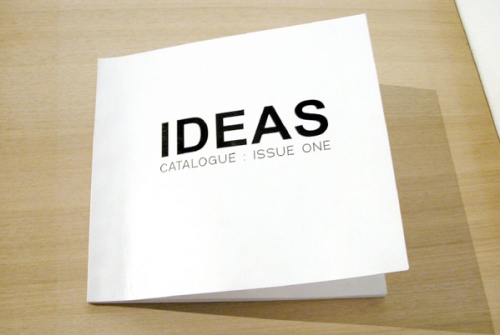Instructional Art
Gabrielle de Vietri conceived the Ideas Catalogue as a way to use up the leftover ideas from her art practice. Readers can submit their own ideas to the catalogue and attach a price to their ideas, from $4 up to $50,000. Catalogue issue#3 is taking submissions now. Thanks to the ever-excellent Not Quite Art TV show for the tip off.
The idea is reminiscent of Do It, a set of artist’s instructions that are collected online and in a book. They are to be realised by anyone interested and capable enough to do so, in any place of their choosing (subject to the instructions of course). The project began in 1993 with a discussion among friends Christian Boltanski, Bertrand Lavier, and Hans Ulrich Obrist. All three had been interested in various forms of instructional procedures since the early 1970s. One such project instructed you to: Tip a bicycle seat so that the front points upwards and use the seat to squeeze lemons.
After looking again at the Do It book and reading through an Ideas Catalogue I started to think more about instructional art and design, especially in relation to the post below from Dan Saffer on removing practical method from the design process. I wonder what sort of results a designer would get if they truly removed themselves from the process of making the design, and left the result purely up to chance. Would you be happy with the result, does the result matter, or is it just the creation of the idea that matters?
Reading through the essays on the Do It site told me about the history of instructional art. The beginning of the technique is credited (at least on this site) to Marcel Duchamp. In 1919 he sent instructions to his sister and new husband for the creation of their own wedding present. To create the oddly named wedding present, Unhappy Ready-Made, the couple was told to hang a geometry text on their balcony so that wind could ” go through the book [and] choose its own problems…”
From Marcel Duchamp the essay leads to John Cage, who in his role as teacher at the New School for Social Research between 1956 and 1960, developed many chance compositions, “as a means of effacing his own likes and dislikes”. He influenced many other artists at the school, some of whom went on to create the Fluxus movement (of which Yoko Ono is the most famous member).
I wonder if the current project you are all working on, where you remove yourself from the final creation of the work, is in some way a development of instructional art. Are you able to distance yourself from your “likes and dislikes” enough to allow the process to happen as it will? What do you think about this work that is not created by your own hand? Is it still your idea or do you feel as though the ownership of the idea has transferred to the “realizer”?
If you have written a really good brief, with instructions that are clear and precise, then your “realizer” should be able to create your work in a manner that is as close as possible to your intention. If your brief is a little more open to interpretation, then perhaps you should accept the final results in the spirit of the conceptual artists such as Duchamp and Ono. Believe that the value in the work lies with you, the conceptual artist, and leave the result to chance.
Filed under: Art, Publication Design | Leave a Comment



No Responses Yet to “Instructional Art”